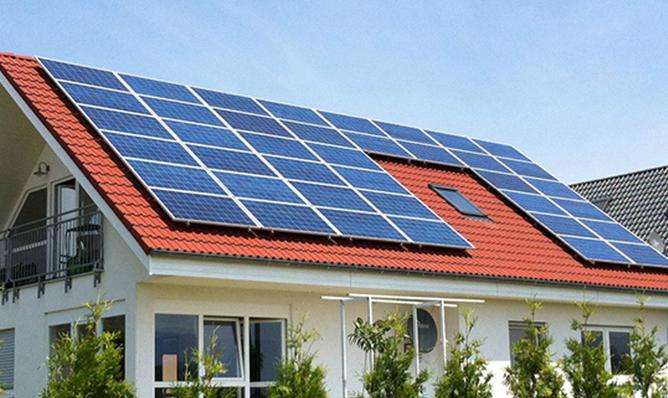The unit is kw.
Hydropower is the science and technology that studies technical and economic problems such as technical construction and production operation to convert water energy into electrical energy. The water energy used in hydroelectric production is mainly the potential energy contained in the body of water. In order to convert hydraulic energy into electrical energy, different types of hydroelectric power plants need to be built.
Flow times decline in physics
The formula for the efficiency of a hydroelectric plant: N=9.81QHη
Where N is the efficiency of the hydroelectric plant (kW); Q is the reference flow (m3/s); H is the net water height (m) (see water height of the hydroelectric power station); eta is the total efficiency of the hydroelectric generation unit, and its value is 0.70 to 0.90.
Annual electricity productionhydroelectric power plants is not calculated based on the installed capacity, but based on the volume of water. The amount of water used by the reservoir for electricity production over the course of a year can be recalculated to calculate the annual electricity production. The installed capacity of hydroelectric plants is calculated on the basis of the average maximum flow.
Detailed information:
Electricity consumption during a period is equal to the average production during the period multiplied by the number of hours in the period.
When the proportion of hydropower in the power system is large and there is a large amount of seasonal energy, the available power of the hydropower plant may not necessarily be fully utilized by the system electrical, which leads to water loss. couldnce. From this, the available power of the hydroelectric plant can be calculated, after deducting the power consumption of the hydroelectric plant and the energy transmission and transformation losses before going online, this is the power supply effectiveness of the hydroelectric power station. The electricity produced by hydropower plants provides an important basis for calculating the benefits of electricity production from hydropower plants.
Baidu Encyclopedia - Electricity production of hydroelectric power plants
How to calculate the electricity production of hydroelectric power plants?
Discharge, height d 'water, kinetic energy, objects of a certain mass moving at a certain speed all have kinetic energy, water is no exception and kinetic energy can be converted into potential energy, it' that is, the kinetic energy of flowing water can be convertedie at a certain height of water. The kinetic energy flow rate is according to the kinetic energy formula: 1/2 mv^2 2. Hydroelectric head fall energy The essence of hydroelectric generation is to convert the potential energy of water into the highlands in electrical energy for the same amount of water, the larger the drop of water, the greater the energy. The falling energy is proportional to the product of the volume of water and the falling, i.e.: mgh 3. Loss links and loss rates of flow velocity and kinetic energy of head in hydropower (such as water inlet, water outlet, turbine vortex, pipe vortex, etc.) There is friction in the water flow channel. The force will cause the water to lose its kinetic energy, thereby affecting the energy conversion efficiency. Friction and eddy currents exist at the inlet (i.e. water inlet), pipe and outlet(water). outlet, usually called a waste pipe in terminology) of the flow channel, thereby consuming the kinetic energy of the water for the production of electricity. When the water flow turns or bypasses obstacles, it will produce a spilling phenomenon. The spill part will generally produce vortices which are locally turbulent water flows, which consume a lot of water flow energy. towers and obstacles. When the working state of the hydraulic turbine deviates from the design range, the blades, tail water, eddy currents will be generated in the tube, and energy will be lost. 4. The term “non-pressure pipeline power generation” or “pressure pipeline power generation” is not very precise. Hydroelectric power plants typically use pipelines and canals to divert water to produce electricity. Pipeline methods are dividedin pressure-free and pressure-free methods. , the water is filled with water diversion pipes, the water flow has a certain pressure, this is called pressure. No pressure: that is, the water does not fill the pipe. Although water flows through the pipe or tunnel, it is physically equivalent to flowing through the channel. 6. In hydropower production, the utilization rate of conversion of flow, height, kinetic energy - high, low and general final (excluding intermediate loss links and loss rates) of electrical energy is not very clear. and the conversion utilization rate is not very high. In principle, the flow rate if it is too high, it will definitely be more affected by the friction of the pipe walls, but there are principles in the design of hydropower plants. the higher the design throughput. 7. I didn't understand the calculation formula for the conversion ratehydraulic energy and electrical energy. The formula of the hydraulic turbine is: P=9.8gQH P is the output power, the unit is 9.8 kilowatts, that is; the acceleration of gravity; g is the efficiency (originally this symbol is not, cannot be printed, temporarily replaced), which is determined by the efficiency of the turbine, pipeline and other efficiency losses. Generally, a power plant can just take 0.8 to 0.9; is the flow rate, unit: cubic meter/second; H is the water height, that is to say the water level upstream and downstream of the power plant. The difference, also called drop, can be calculated using the altitude difference, unit: meter.
Energy production of a hydroelectric plant = 9.8*QHT/n (KJ) where: Electricity production rate Q, m^3/s; H Power generation head, m; Energy production time T, s; efficiency. The actual calculation is much more complicated than the one above, because Q and H are not completely constant, the starting state of the hydropower station generator also changes, and the power generation efficiency is not fixed. This requires detailed data on the operation of. the power plant to be calculated.














